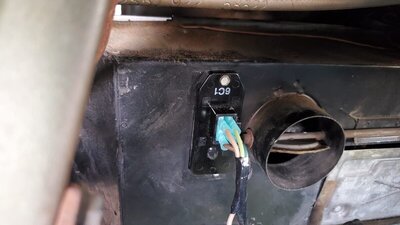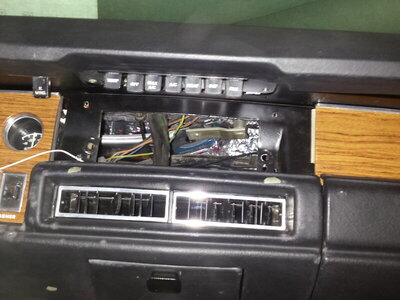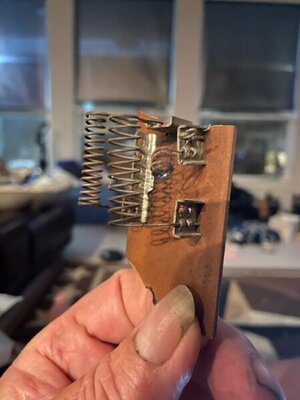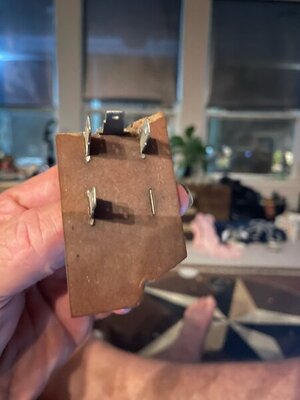signalsparks
Active Member
I have a 1970 Satellite with Factory air. The 2x previous owner had bypassed the blower motor resistor pack in favor of jumping a couple of the leads so the fan was either leaf-blower or off. The wiring connector housing was melted, and the resistor board was cracked, so I imagine he had some problems...
I immediately went to the Interwebz and found that nobody has a replacement. I decided to research Standard Motor Products' very nice searchable catalog. I looked for 4-pin units for Dodges, and just looked at the pictures. Unfortunately the physical dimensions and resistor values aren't listed, but I came up with a short list of possible units that had appeared to a) be generally rectangular in shape, b) have terminals that looked like they were compatible with standard-size spade lugs, and c) when cross-referenced to my local auto parts store, were in stock and not too expensive. My list was whittled down to about 5 possibilities.
My original unit, except for being cracked, was undamaged, so if I held it just right, I could get reliable resistance readings. Armed with my old unit (to match size) and my trusty Volt-Ohm meter, I toddled off to the auto part store to figure out the best fit.
Standard Motor Products part # RU109. If they make you look by make and model, say "1992 Jeep Grand Cherokee."
I bench-tested everything and determined the following wiring:
Tan wire to "L" (terminal on the new resistor pack)
Lt. Green to "M1"
Brown to "M2"
And the double dark-green to "H"
(I made a pigtail to a new harness so there's only one dark green wire shown)
Re-use the top 1/4" screw, and tighten snugly. It *just* covers the hole!

I immediately went to the Interwebz and found that nobody has a replacement. I decided to research Standard Motor Products' very nice searchable catalog. I looked for 4-pin units for Dodges, and just looked at the pictures. Unfortunately the physical dimensions and resistor values aren't listed, but I came up with a short list of possible units that had appeared to a) be generally rectangular in shape, b) have terminals that looked like they were compatible with standard-size spade lugs, and c) when cross-referenced to my local auto parts store, were in stock and not too expensive. My list was whittled down to about 5 possibilities.
My original unit, except for being cracked, was undamaged, so if I held it just right, I could get reliable resistance readings. Armed with my old unit (to match size) and my trusty Volt-Ohm meter, I toddled off to the auto part store to figure out the best fit.
Standard Motor Products part # RU109. If they make you look by make and model, say "1992 Jeep Grand Cherokee."
I bench-tested everything and determined the following wiring:
Tan wire to "L" (terminal on the new resistor pack)
Lt. Green to "M1"
Brown to "M2"
And the double dark-green to "H"
(I made a pigtail to a new harness so there's only one dark green wire shown)
Re-use the top 1/4" screw, and tighten snugly. It *just* covers the hole!



















